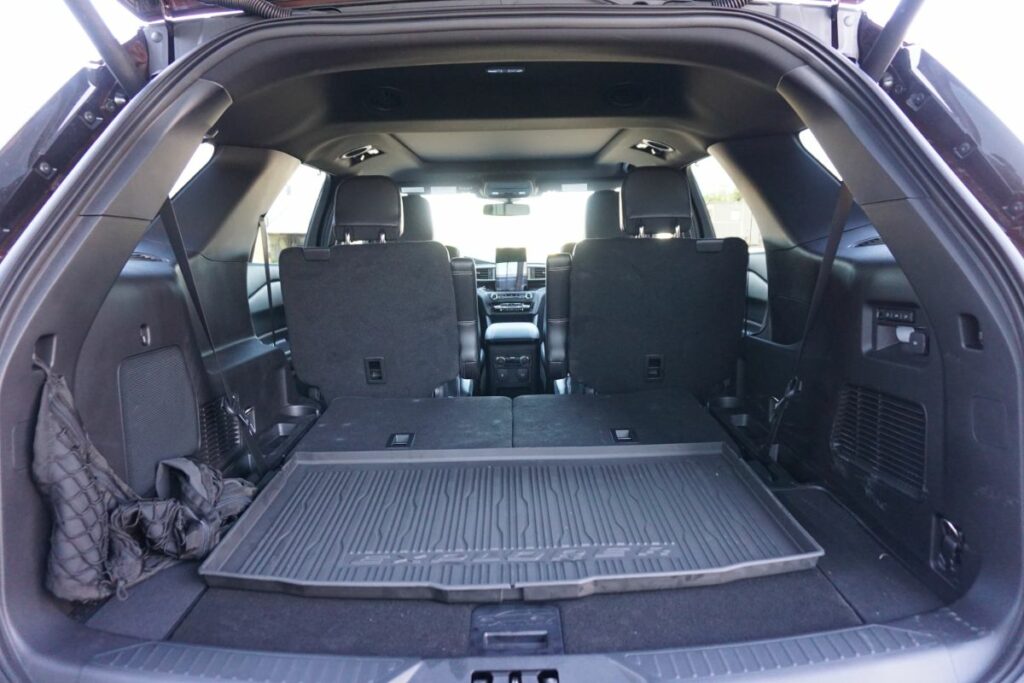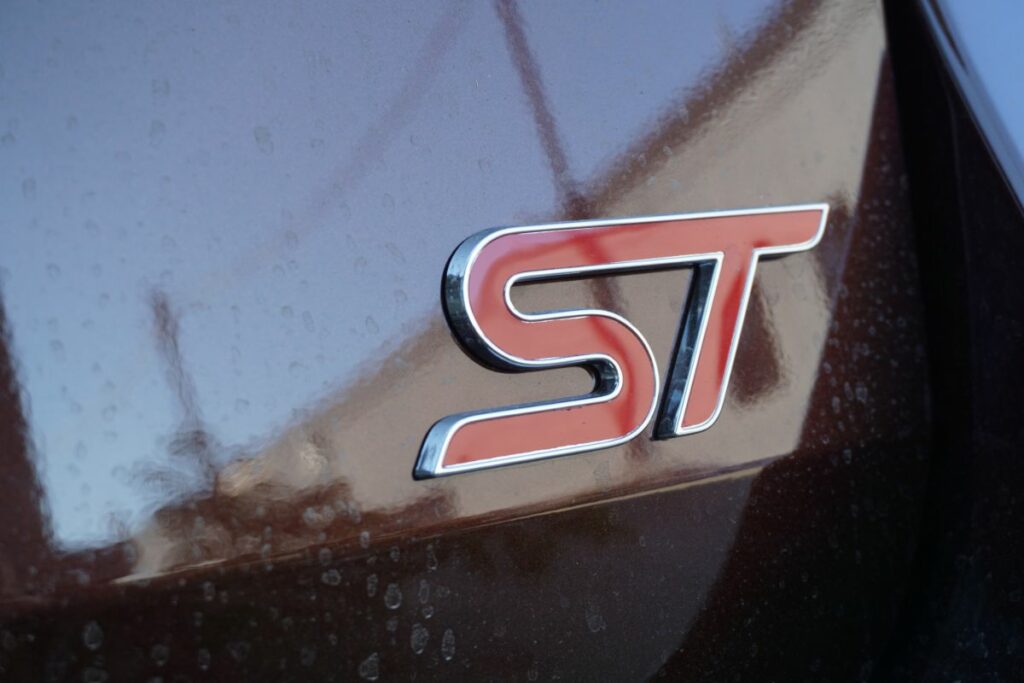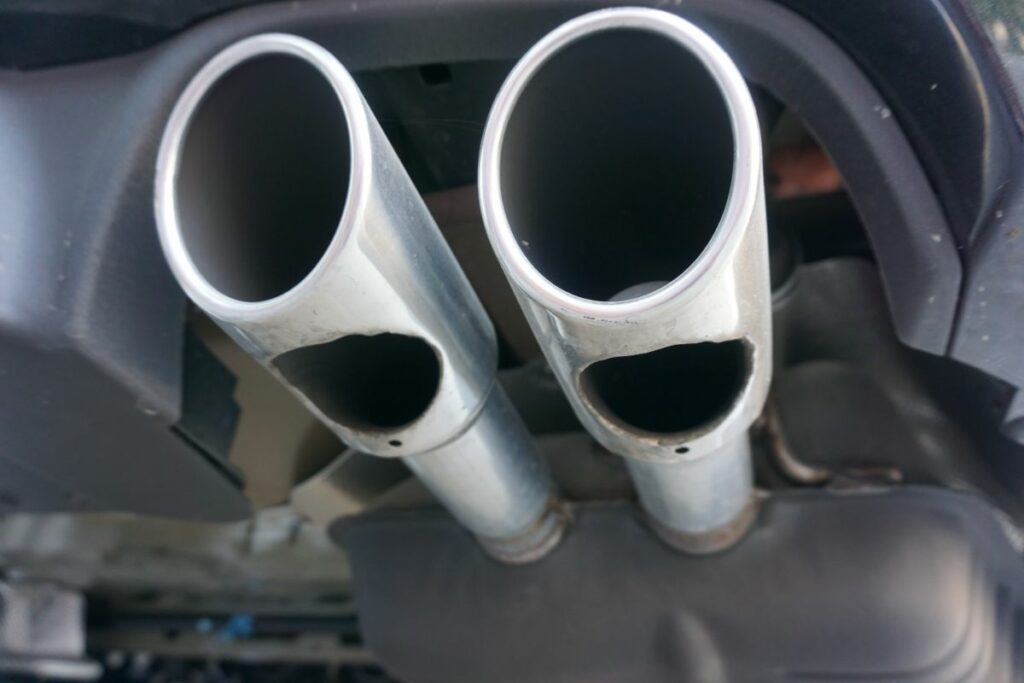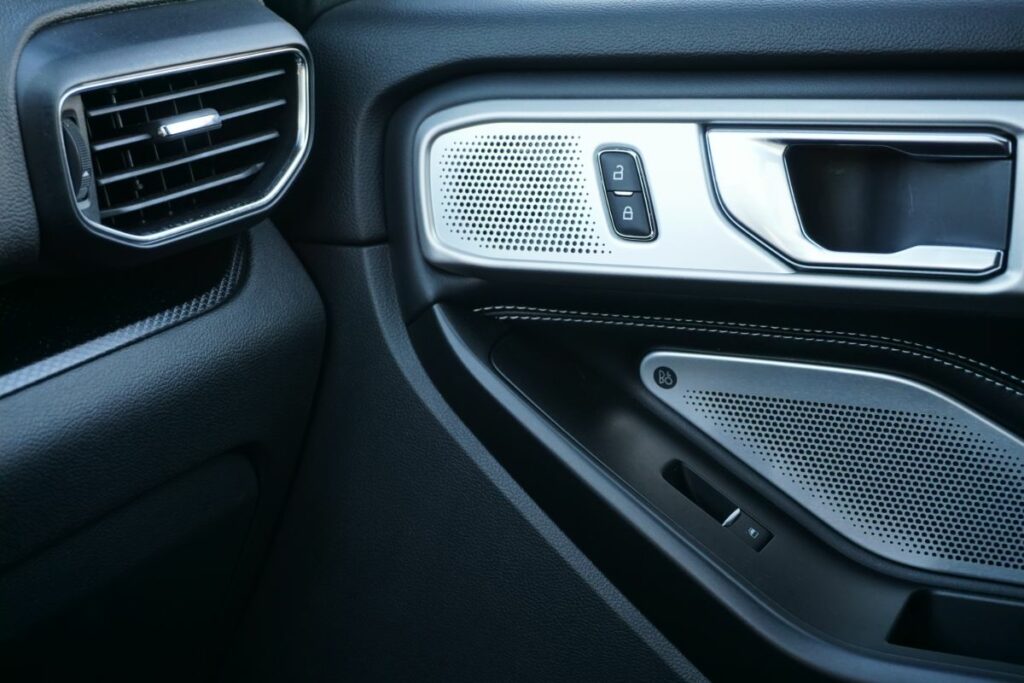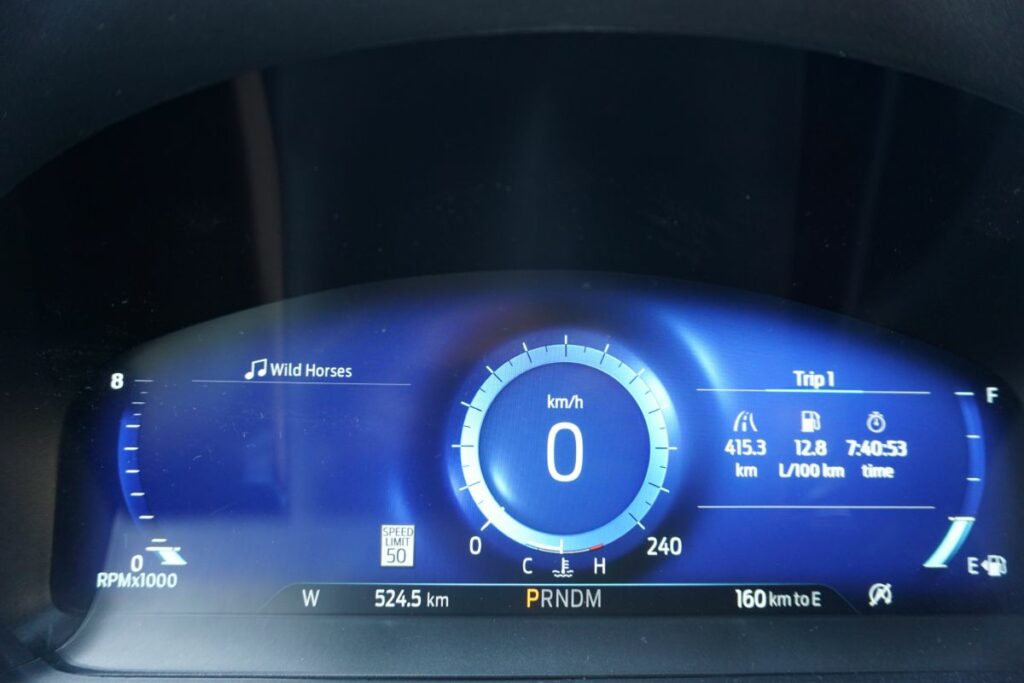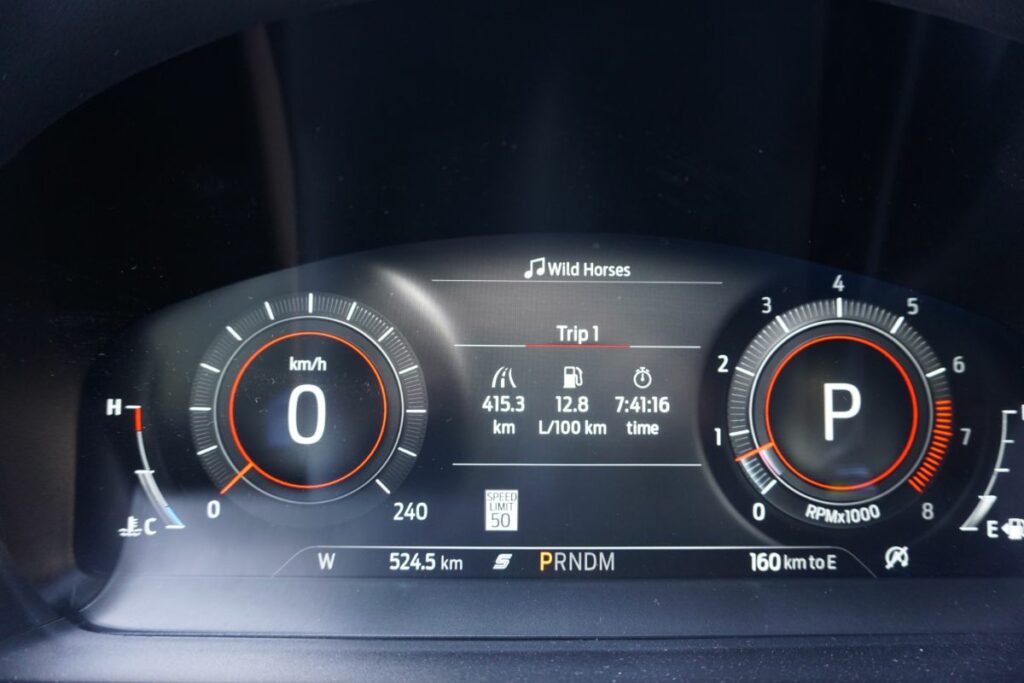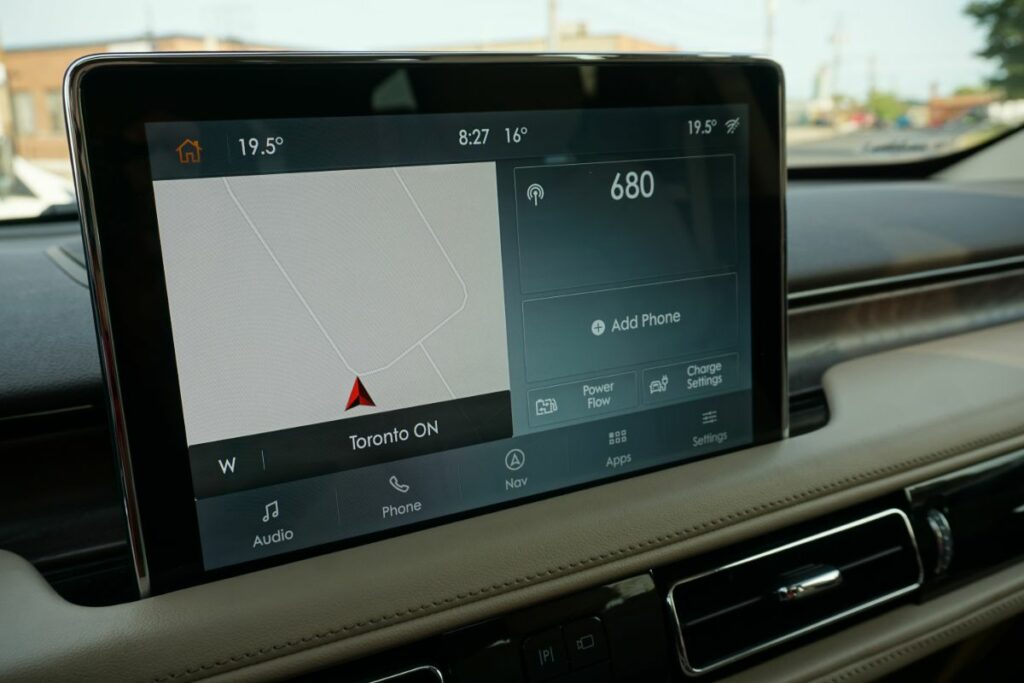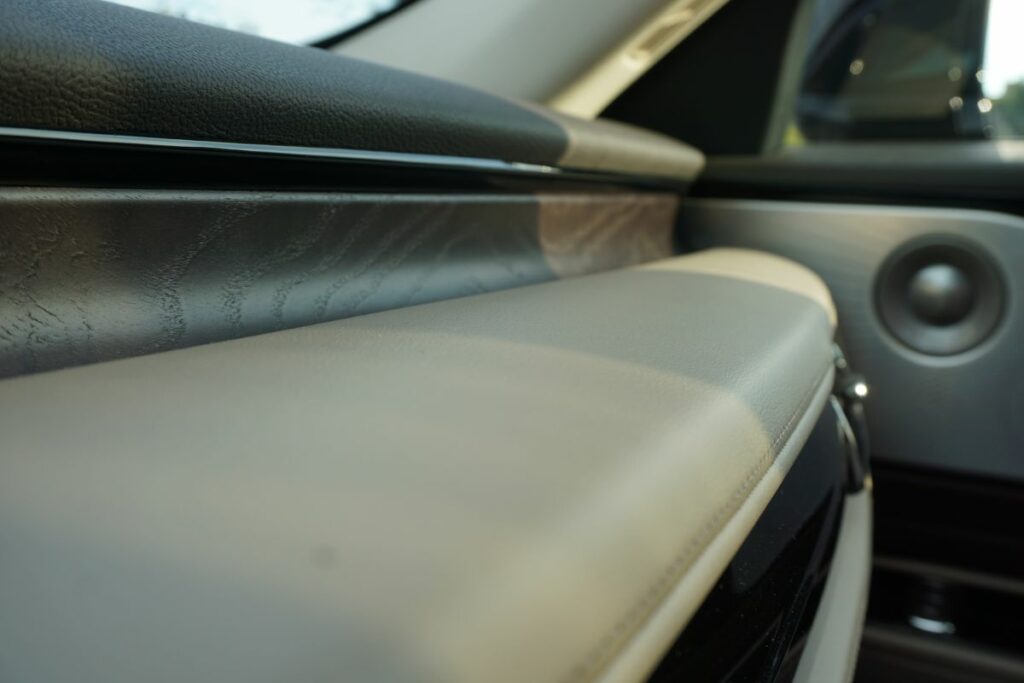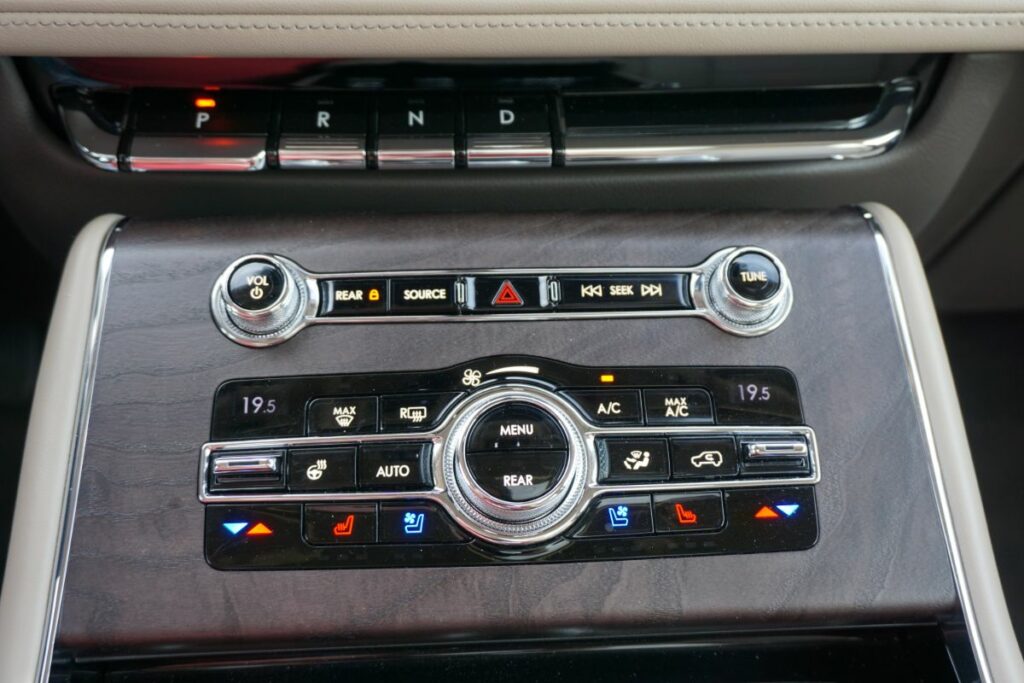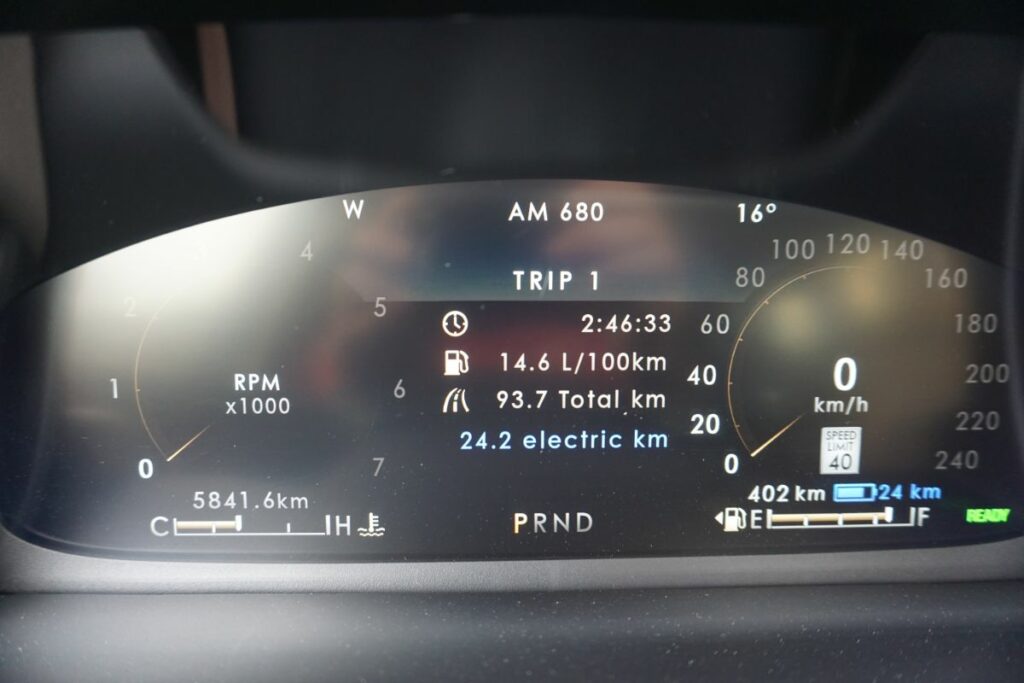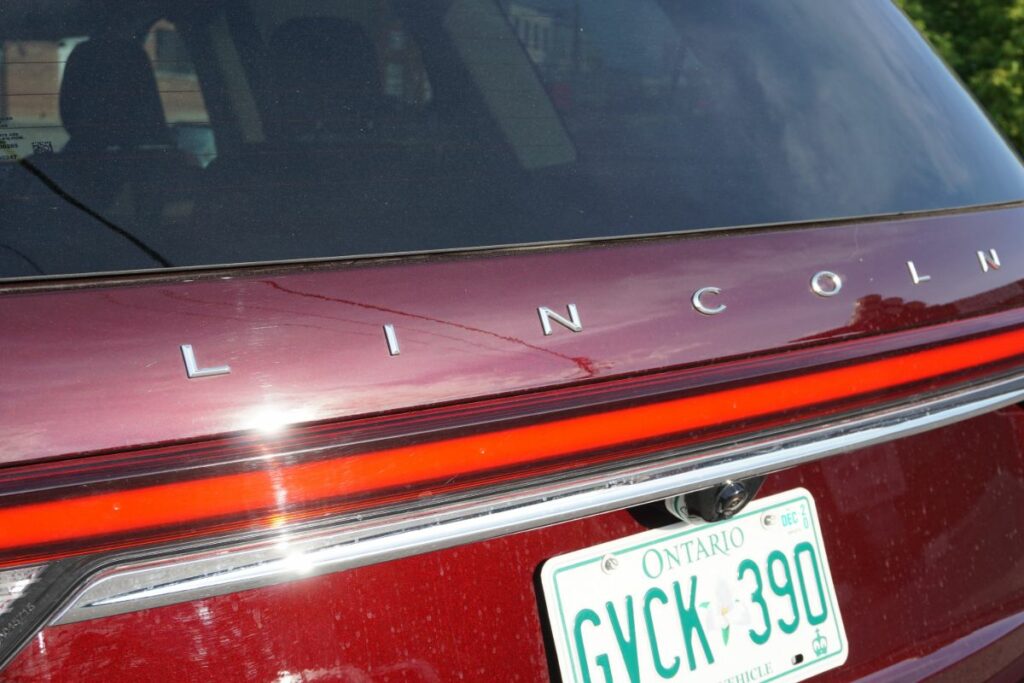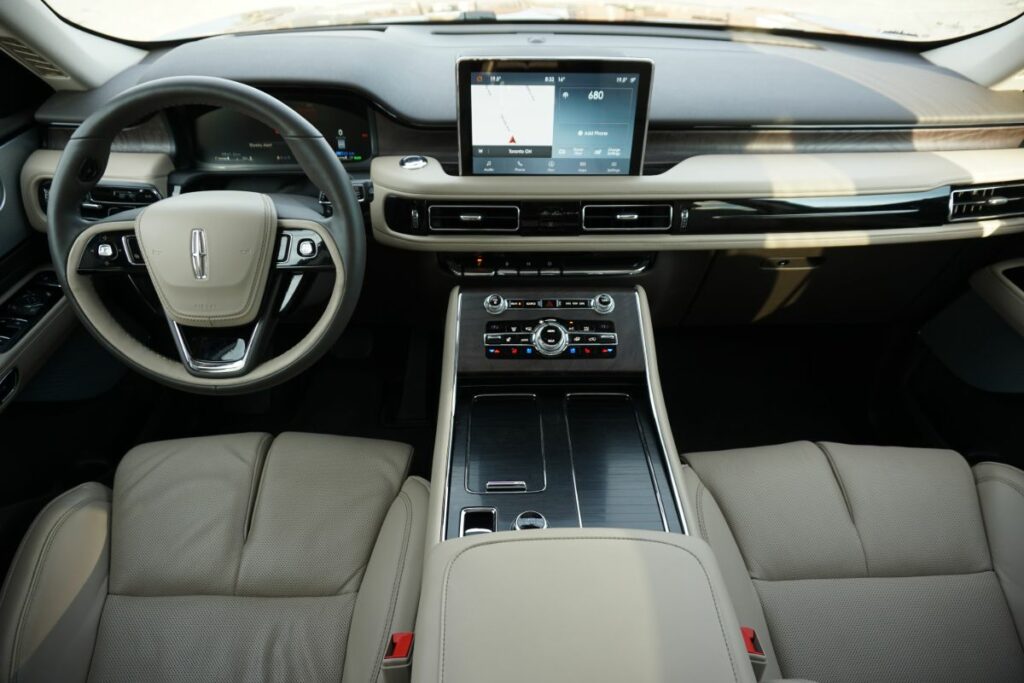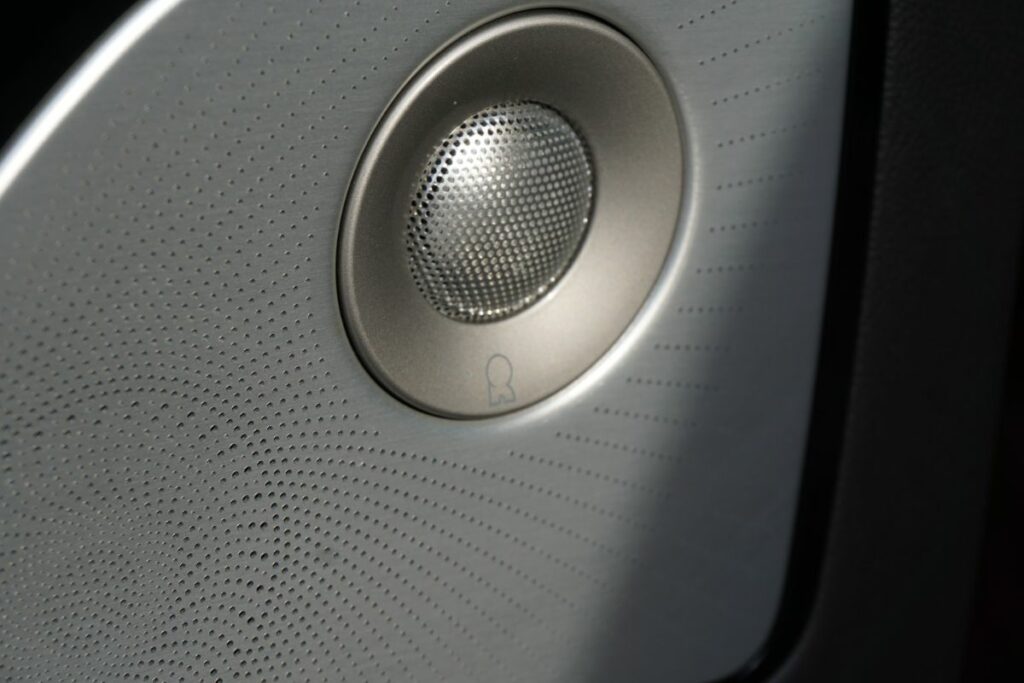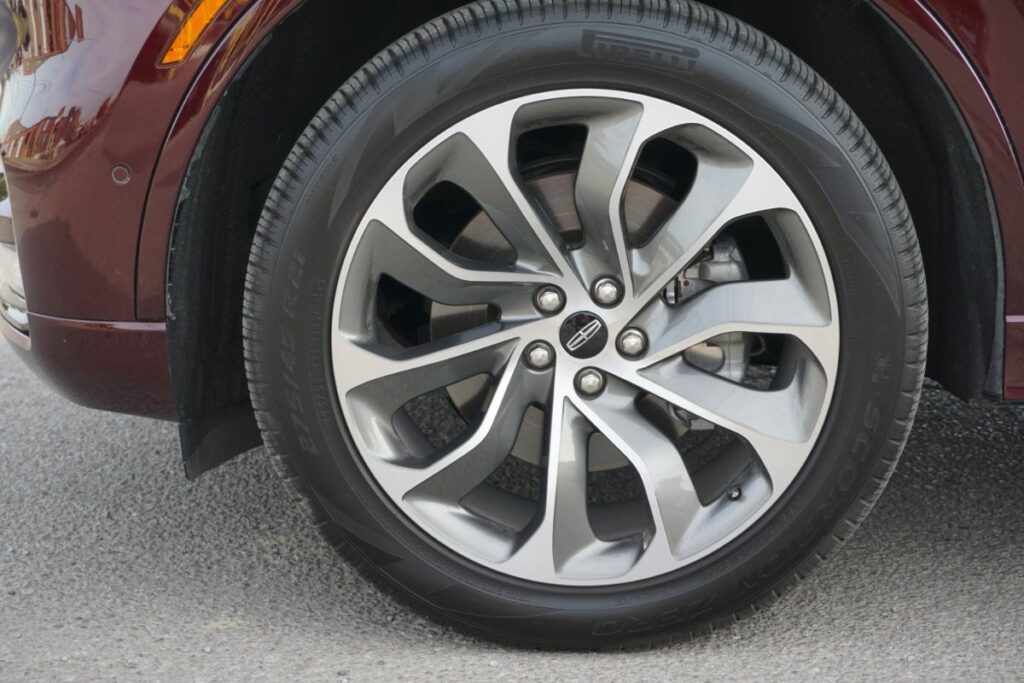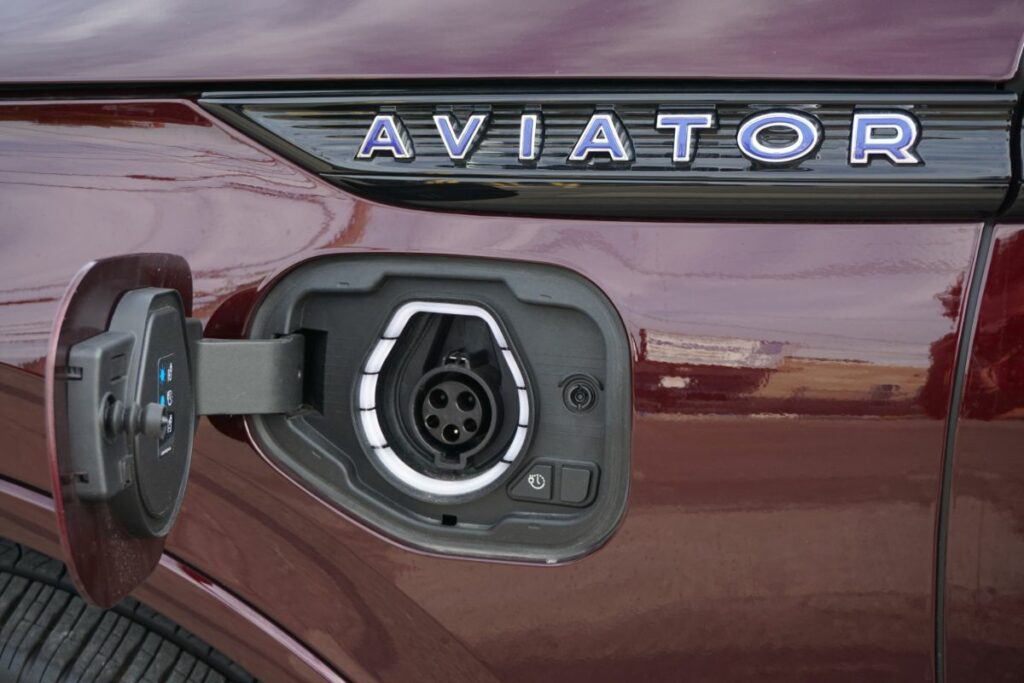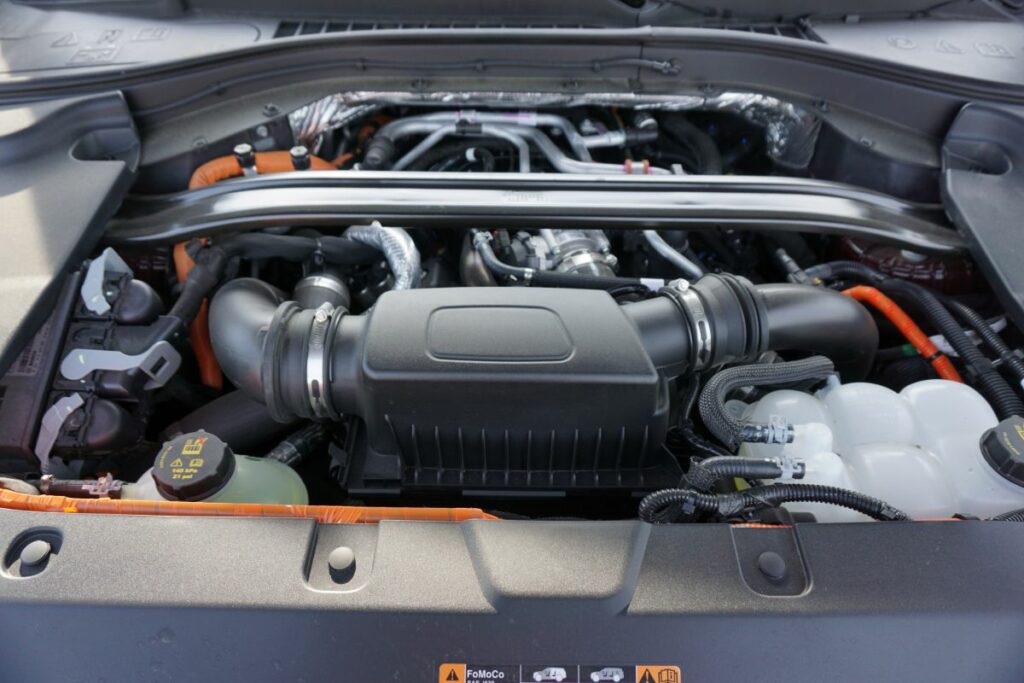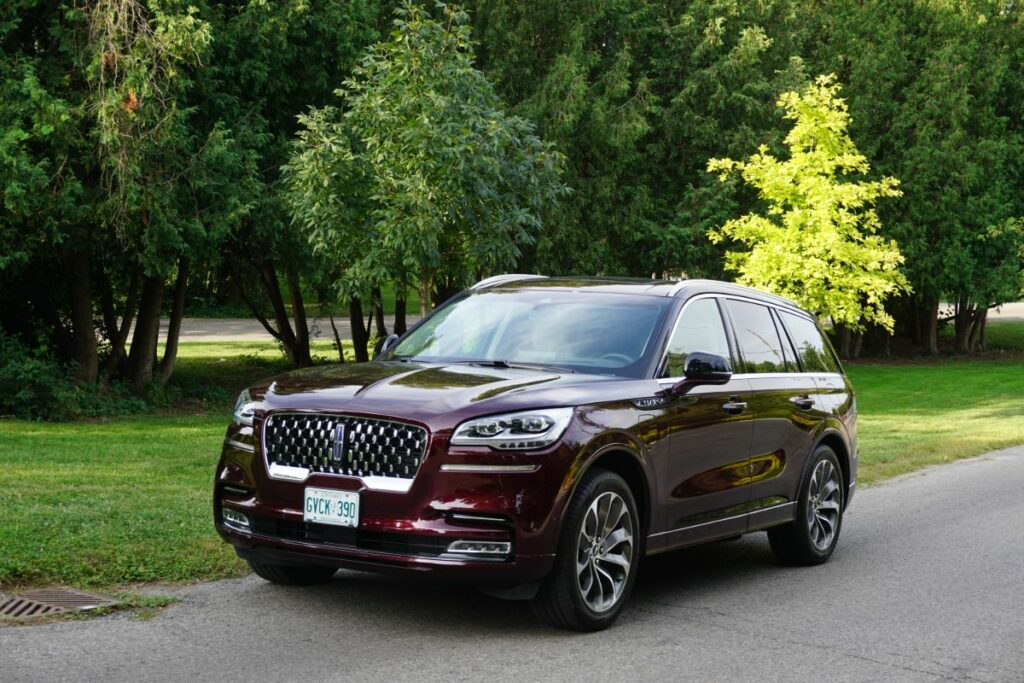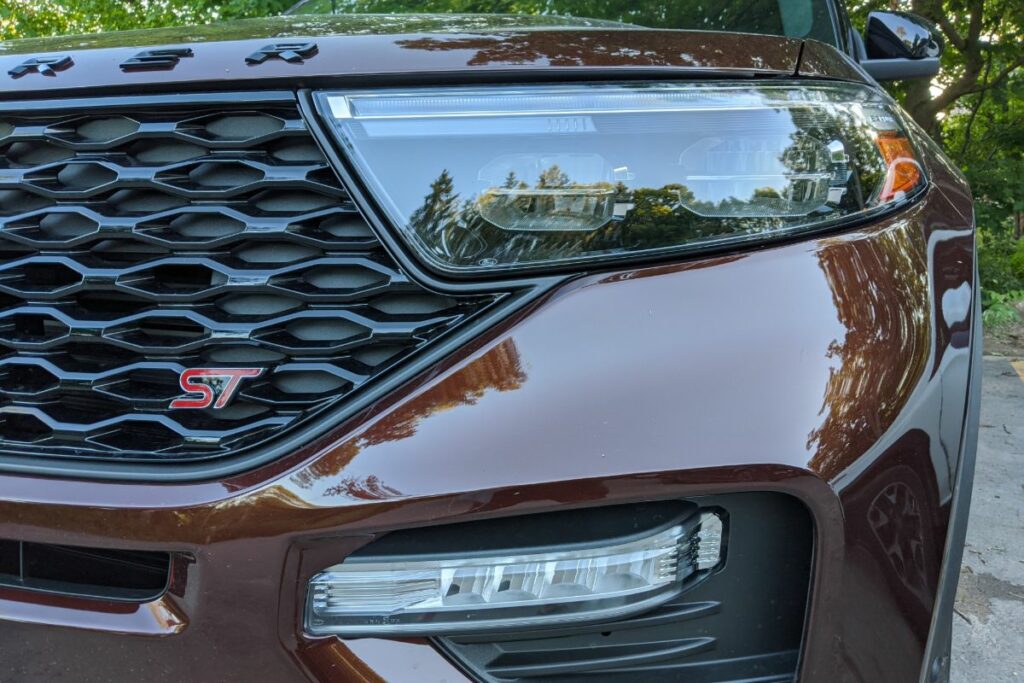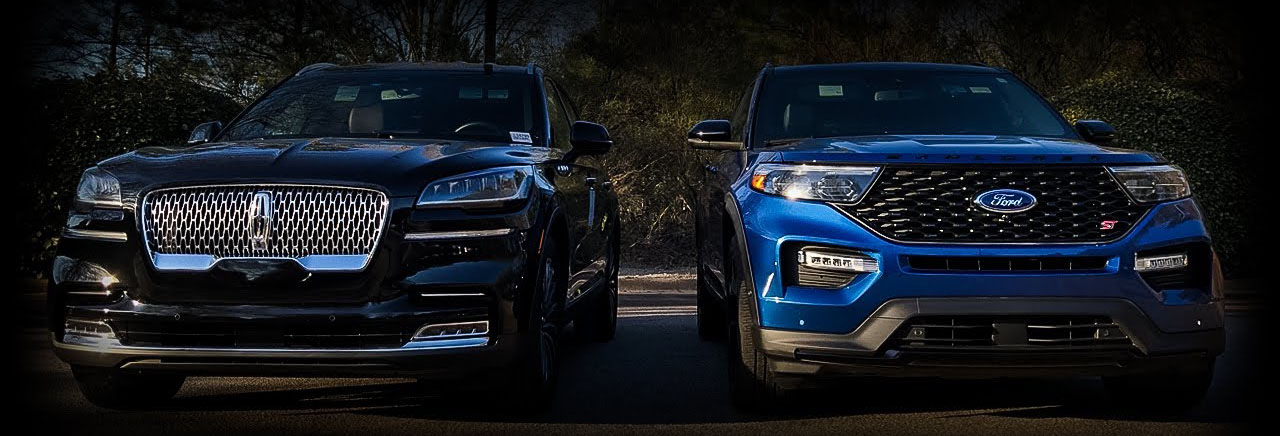Words by: Adam Allen
We take an in-depth look at two CD6 platform mates
The CD6 is not a retro compact disc player you might find collecting dust on the shelf of your neighbor’s rumpus room. In this case it refers to the global platform in building code speak that underpins the newest versions of both the Ford Explorer and the Lincoln Aviator. These days, it’s common practice for a manufacturer to have one platform that is scalable according to the vehicles size- made to bolster everything from small crossovers to the big three row variants you see here. The fundamentals of the CD6 bones can be traced all the way back to the recent Ford Fusion, which was sadly discontinued as Ford continues its march away from sedans to embrace a lineup made up exclusively of SUVs.
So here we have a brand new Explorer is sporty ST trim, and a fully loaded to the gunwales Lincoln Aviator GT, both sharing a 2020 model year vintage. In years past, Lincoln has been chided for making their products too similar to their Ford counterparts with corresponding price tags that have been known to raise an eyebrow or two. We wanted to find out if the CD6 platform is malleable enough to lend enough distinction between the Explorer and the Aviator. Ford graciously provided us with the keys to one of each so we could see what’s what. After a few weeks flogging each of them, we learned that despite sharing a common architecture these two are very different indeed.
2020 Ford Explorer ST AWD

Did you buy an Explorer in 2019, or any year prior to that? Yeah, you might not want to read this bit. The CD6 platform- which prioritizes a longitudinal, rear drive architecture- lends itself to styling that looks light years better than any of its predecessors. The Rich Copper Metallic paint and 21” black wheels shod in high performance rubber do their part to help up the visual wattage as well. All told the new Explorer is at its handsomest in ST trim.
Before we get into the nitty gritty, while we’re talking about aesthetics we need to devote some of this space to lavish kudos on the Ford engineers who innovated a very simple but very brilliant solution for an alternative to all the gaping, awful fake exhaust outlets and the wimpy little actually exhaust tips that reside within you see everywhere these days. OEMs do this because direct fuel injection- a technology used industry wide- causes unsightly black soot buildup on the exhaust tips. The Explorer’s exhaust circumvents this by expelling their gasses below the exhaust exit, not through it as usual. Visually it is a massive improvement and one we wonder why it is has not been copied by more brands (it’s the same deal with the Aviator.)
Step inside the Explorer and you first notice how much it’s grown, the CD6 architecture yielding a welcome increase in dimensions for both passengers and cargo alike. These are not elaborate digs but rather austere as you’ll see in the gallery below. Don’t forget that this is a performance model folks, and generally speaking cars of that ilk lack any flourishing in favor of a more businesslike environment. Some surfaces are a little questionable in their quality, but overall there’s a lot to like here. A couple of notable items deserve mention, starting with the infotainment screen that looks like one of the kids propped it up on the dashboard. Although it looks tacked on, it’s an easy reach for the front seat occupants- too bad it’s let down by the latest version of SYNC, which looks streamlined and contemporary but suffers from lag (or all out refusal to respond) from mundane commands like changing the radio stations. Where the infotainment fails to deliver, the seat comfort does not, and pick any perch in the Explorer and you will be treated to a comfortable experience, the most so in any from the past.
And no Explorer from yesterday ever got to wear an ST badge (they were called Sport, and they kinda lacked a bit on that front) and that decision to equip it as such caused a little worry. The Fiesta and Focus ST? Certifiably a pair of cracking cars. The Edge ST? Not so much. It felt too limp wristed, too half baked to be taken seriously. There are some readers that will opine an Explorer- or any SUV for that matter- should never be dubbed an ST. Whatever camp you fall into, you can be reassured that Ford didn’t mess around with the Explorer; it truly feels like a fully realized performance SUV.
The steering doesn’t offer the kind of feel you would like, but it does offer an excellent sense of accuracy and tracks straight as an arrow on the highway. Find an offramp that holds the promises of some twisty backroads and throw it into a corner- this big fella can really cut a rug as long as you don’t push the limits of the suspension and the massive Pirelli rollers past their limits which are appreciable high for something that may never be driven in anger in its entire life.
Switch the Drive Mode selector to Sport and the dashboard layout switches to a more serious digital layout featuring actual speedometer and tach side by side. Angry or not, once you give the ST a boot full you will not be able to suppress a smile. Who cares if the 3.0 twin turbo V6 pipes in way too much fake engine sound (a sound that doesn’t sound all that lustful to the ears, save for some turbo whistle) because this baby goes. There are gobs of power everywhere and no matter the engine speed, which you might expect of an engine churning out 400 horsepower and 415 pounds feet of torque. The closest competitor it has is the Dodge Durango 392 and its huge 6.4 litre V8 makes more power and sounds better doing it, but don’t count the Explorer’s turn of speed out, especially if you let the two loose on roads with more corners than straights. The only flaw on the ST’s dynamic resume is the 10-speed gearbox. We have sampled it in other applications and can attest to is usual excellence. In the Explorer we noted some lumpy low speed gear shifts, lurches while underway and some needlessly firm shifts that cause your head to bob back and forth. Ford, can you smooth out the shift points and calibration, and while you’re going through the trouble can you make the shift paddles respond faster too?
After our time in the Explorer ST drew to a close, it gave us pause for thought. If Ford can make a large vehicle like the Explorer fun and agile, imagine what it could do if reverses course on its SUV-only pledge? Take the Explorer’s pleasing rear-drive inspired styling and futz around with the platform until you’ve got something more akin to a sedan. Anyone for a revived Taurus SHO, or as we imagine, a Woody station wagon in ST trim? Now that would be something. In the meantime, know that if your family hauling needs are prioritized alongside the need to let loose every once in a while, the Ford Explorer ST should be on your list.
2020 Ford Explorer ST AWD— Specifications
- Price as tested: $66,449
- Body Type: 4-door, 6-passenger SUV
- Powertrain Layout: Front engine/All-wheel drive
- Engine: 3.0 twin turbocharged V6, DOHC, 24 Valves
- Horsepower: 400 @ 5,500 rpm
- Torque (lb-ft) 415 @ 3,500 rpm
- Transmission: 10-speed automatic
- Curb weight: 2,201 kg (4,853 lbs.)
- Observed Fuel Economy (Combined): 12.8L/100 km (18 mpg)
2020 Lincoln Aviator Grand Touring AWD

Before a door is opened and a wheel has even turned, the Aviator GT makes an impression. Sharing the same proportions as the Explorer ST, it looks elegant but purposeful. Massive 21” wheels make for an aggressively subdued stance and the tasteful bits of chrome and LED lighting elements conspire to make heads turn and fellow motorists do double takes in their mirrors. Our tester’s unique Burgundy Velvet paint helped out a bit, too.
So far so good outside- now activate the electronically actuated soft close doors and take a look inside, which we’re delighted to report boasts the same pause-and-take-it-all-in vibe as the exterior, perhaps even more so. As you can see in our gallery, the confines of the Aviator GT are strikingly beautiful but the images simply don’t do it justice. Every single surface is beautifully rendered and build quality is unimpeachable. We especially loved the wood inlays throughout the dashboards that begged to be touched.
We haven’t even fired up the ignition yet and one thing is abundantly clear- the problem that has dogged Lincoln for years has all but been banished to the dustbin of history, that they are simply warmed over Fords. And while it is true that the Aviator is a very close relative to the Explorer ST, the two feel quite different and there’s a specialness to the Aviator that is nowhere to be found in its Ford cousin.
The spec sheet shows promise too. In Grand Touring spec, you get the very same drivetrain that comes from the Explorer ST which means a turbocharged V6 mated to a 10-speed automatic punching out 400 horsepower. The Lincoln ups the ante by adding a plug-in hybrid system which means that with the engine and electric motors working in tandem, the Aviator makes a sit-up-and-take-notice 494 horsepower and a mind blowing 630 pound feet of torque. Of course, the SUV is able to make trips under electric power only- which is kind of cool but we prefer to use the batteries juice to make as much power as possible. The Aviator doesn’t care which approach you favor and won’t mind a bit if you don’t plug it in every night. While the batteries will very slowly regenerate power driving around, you’re going to want to allow it to soak up some wattage when you can.
Wattage is something that the Revel audio system can identify with. We are spoiled by so many high end stereos these days, but Lincoln’s choice to Revel tap as their audio provider seems to have been a good one- it is simply spectacular. Some of its talents include making satellite radio actually sound kind of good and the demo mode is something we discovered buried in the menus that you’ll want to repeat over and over again.
We packed the Aviator to the rafters and headed east for a sojourn in Prince Edward County, truly one of the more special places Ontario has to offer amongst a long list of beautiful attractions. Now, as anyone that has plied that particular strip of Highway 401 from Toronto to Belleville knows it isn’t exactly the kind of road trip that allows you to relish in the journey. We all wore smug grins because unlike anyone else around us, we got to soak up the kilometers in sheer comfort. We hereby declare that the Lincoln Aviator Grand Touring, is, well, really good at grand touring. Occupants are coddled by 30-way (!) power seats up front and captain’s chairs upholstered in buttery soft leather in the rear and not one person complains of chintzy legroom. There is a torrent of thrust for passing a twitch of the right foot away and the suspension, despite the massive wheel and tire package, glides over the roads as if they were carpeted. We even managed 11L/100km over our week with the Aviator and we weren’t trying all that hard, an impressive feat that will keep you on the road longer having to stop for fuel less frequently.
As much as the Aviator GT brings to the table, it suffers from some flaws that we think hold it back from being truly great. The first issue is how much it tips the scales. At 2,650 pavement buckling kilos, the Aviator is massively heavy, outweighing the Explorer ST by 449 kilos. All that weight lends a substantial, solid feeling when on the highway but it’s not great news everywhere else. While in The County we took Ridge Road into Picton for ice cream, a bit of tarmac plucked from Google Maps because it resembles a noodle of cooked spaghetti. After trying to coax the Aviator around a few corners, the unhappiness to transition directionally and the lack of feel offered by the steering didn’t exactly inspire confidence so we adjusted the pace accordingly. We wondered how much more effective the Aviator GT could be in offering the speed and fuel economy its spec sheet suggests is possible if it went on a serious diet.
The Aviator isn’t just burdened by unnecessary poundage- it is also extremely complex from an engineering standpoint. Take, for instance, the door handles. They operate electrically by pressing a button, whether you are getting in our out (we’d often chuckle watching first time occupants figure out how to open the doors.) Oh, and the doors are of the soft close variety, meaning there is another layer or electronics applied to the simple act of getting in and out of the Aviator. Then there is the issue that applies only to Grand Touring models like the one you see here- the hybrid drivetrain seems to personify the Law of Diminishing Returns. First, like all contemporary hybrid systems, it is not by any means transparent in its operation. It’s fine for the most part, but there are clumsy handoffs between the gas and electric powertrains, and sometimes both chime in simultaneously giving you a massive boost in acceleration you were not planning for. The other issue: it simply doesn’t offer enough range for meaningful electric-only cruising (aircon and other accessories like the audio system and cooled seats eat into the overall range, and that gets even worse in winter) and those heady combined output numbers should put it on pace with some serious performance SUVs and yet is only marginally quicker than its Explorer ST cousin. Why go through all that engineering elbow grease if only meager gains are to be had? All this dizzying stuff happening on the backend caused us to wonder aloud about the issues future customers of preowned Aviator GT models a decade from now might face if all this electronic trickery starts to go wrong.
In any event, somewhat flawed as the Aviator might be, Lincoln deserves credit for producing a car that is wholly in line with the Lincoln philosophy- eye catching looks, decadent luxury and proper thrust one expects all while delivering the quintessential American luxury experience. The niggles we have called out here are not fatal, but fixable. This car exemplifies the great strides Lincoln continues to make- the vast chasm that used to exist between it and competitors has closed considerably. If you didn’t take Lincoln seriously as a bona fide luxury brand before, you should take one for a drive and see that the mission to restore the brilliance of Lincolns of yesterday might be ongoing, and that process is already starting to bear fruit- look no further than the Aviator GT.
2020 Lincoln Aviator Grand Touring AWD— Specifications
- Price as tested: $97,135
- Body Type: 4-door, 6-passenger SUV
- Powertrain Layout: Front engine/All-wheel drive
- Engine: 3.0 twin turbocharged V6, DOHC, 24 Valves
- Horsepower: 400 @ 5,500 rpm
- Torque (lb-ft) 415 @ 3,500 rpm
- 13.6-kWh lithium-ion battery pack (101 hp, 221 lb.-ft)
- Combined System Output: 494 hp, 630 lb.-ft
- Transmission: 10-speed automatic
- Curb weight: 2,650 kg (5,853 lbs.)
- Observed Fuel Economy (Combined): 12.8L/100 km (21 mpg)


